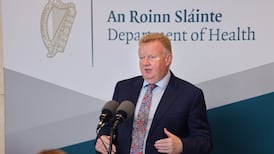SECOND OPINION: Local health servies must be much more than an instrument of central administration, writes Colin Thunhurst
One of the final actions of the outgoing Minister for Health and Children was to agree new regional structures for the health service. Despite references in the accompanying news release to "devolved and empowered decision-making at local level", the establishment of regional offices constitutes an act of centralisation. Regional offices are not "new health boards" but "units within the new Health Service Executive".
To put that another way, they are not being created to ensure that local health services meet the specific health needs and particular conditions of local areas. They are being created to ensure that centrally determined goals and objectives are realised within the geographical areas covered by regions. In this, they follow the model recently implemented in the United Kingdom. If implemented on their own, they represent a substantial shift towards the centre in the balance of powers within the Irish health care system.
Given that the reorganisation was based on a belief that the existing structures represented 'over-management' of the health services, (a premise for which one would have to say there is very little empirical evidence), this shift in power is hardly remarkable. What may be remarkable is that the shift has occurred at a time when 'decentralisation' (albeit as a much abused and poorly understood concept) is being trumpeted across all other sectors of public service management.
But there is another way - and it can be achieved through the new structures. This lies in the establishment of what have been called "community care" or "local health" offices. These were announced, albeit largely unnoticed, at the same time as were the new regional structures. It is likely that, outside of Dublin, their boundaries will coincide with those of the counties. For serious believers in decentralisation - the need to transfer real power (not just desks and offices) from the centre to the periphery - they offer the glimmer of hope in the new structures.
Establishing structures with real decision-making powers at this level would accord with best international practice. For the past twenty years, the World Health Organisation has been studying and analysing the most appropriate organisational structures for local health care management. Although precise formulations and models vary from country to country, the WHO has found that health care delivery is most responsive, (both to the legitimate goals and policies of central government and to the specific needs and conditions of local communities), when it is organised around what is called a district management structure. A district, WHO recommend, should generally encompass a population of between 100,000 and 500,000. A district of such size is seen to be managerially viable, in that it may provide integrated services up to the secondary level, yet still remains locally sensitive.
So far so good, but herein lies a major dilemma. For very legitimate reasons, largely associated with providing continuity of care, it has always been felt preferable to have a unified management structure within health services. But, the newly centralised (regional) structures are structures that have been designed to plan and manage the hospital services. They are not well suited to primary care and public health functions - functions which require much greater local sensitivity and responsiveness. Perhaps the time has come to split the one from the other - accepting the newly centralised structures for the hospital services and exploiting existing decentralised structures for primary care and public health.
The real challenge is to ensure that local health offices are given real power, and to ensure that they are equipped to exercise it. At the heart of the district - and at the core of the achievement of genuine decentralisation - is the creation of a district health management team. This comprises a team of officers encompassing the full range of health care professions and health support professions. Again, a number of options for the district health management team is explored in WHO publications.
This particular balance and this specific location for effective health care management have not been recommended by the WHO in the abstract. It comes from a considered and lengthy appraisal of the most efficient organisational structures required to meet the objectives set down in the Alma Ata Declaration of 1978 - objectives which were subsequently designated as the Primary Health Care Approach. The principles of the Primary Health Care Approach will strike a strong resonance with even the most passing observer of Irish health care policy of recent years. The Government's 2001 Health Strategy, like its predecessor, was rhetorically based in Primary Health Care, being explicitly focussed on realising principles of equity, people-centredness, quality and accountability.
The message to the new Minister for Health and Children would seem to be a simple one. First, she should give her re-endorsement to the Government Health Strategy of 2001. Second, she should study the lessons that have emerged from the various local structures that have been implemented in other (developed and developing) countries. Third, she should implement an appropriate district-level healthcare management model, one which is based on a multi-disciplinary health care management team.








